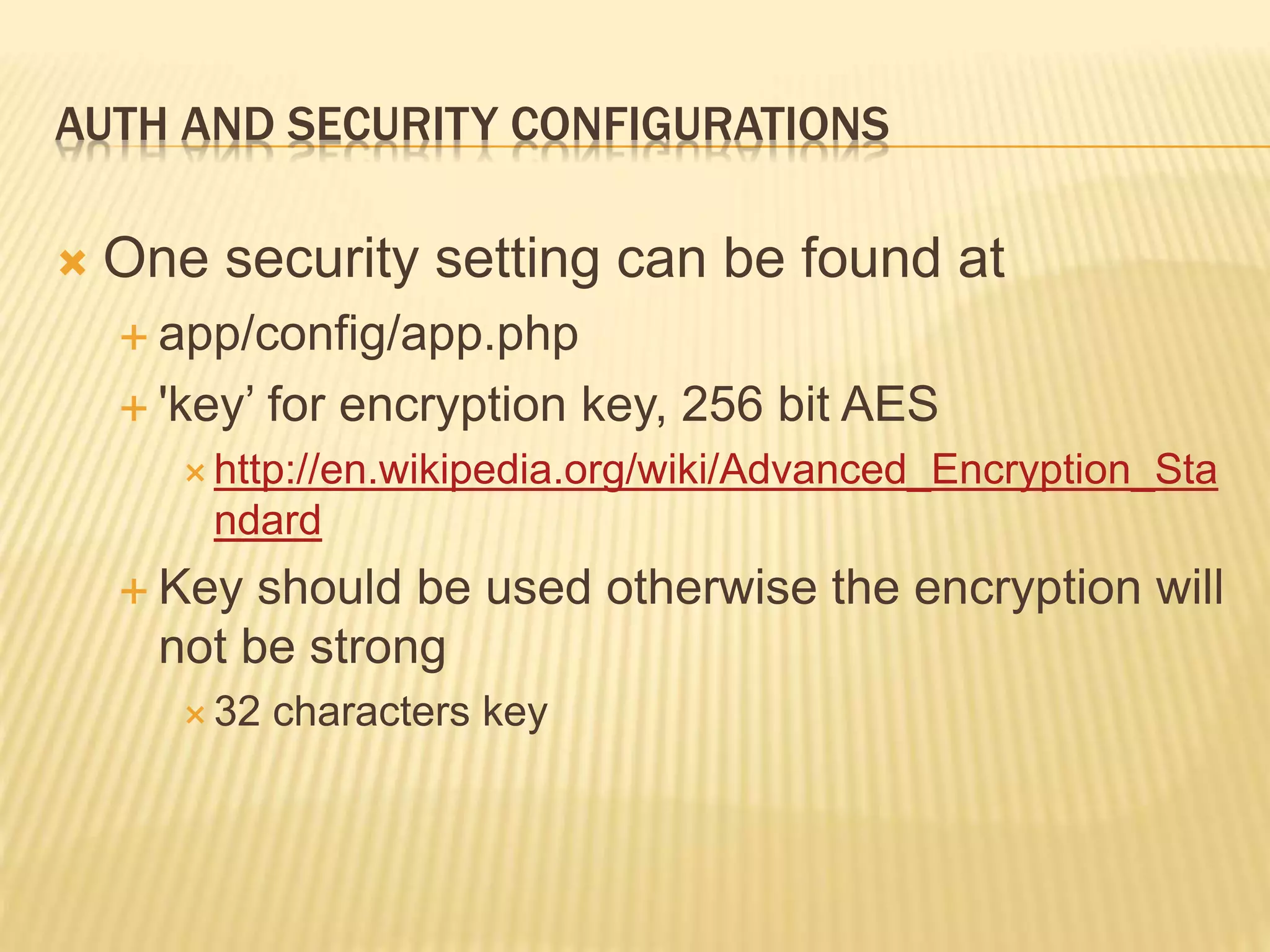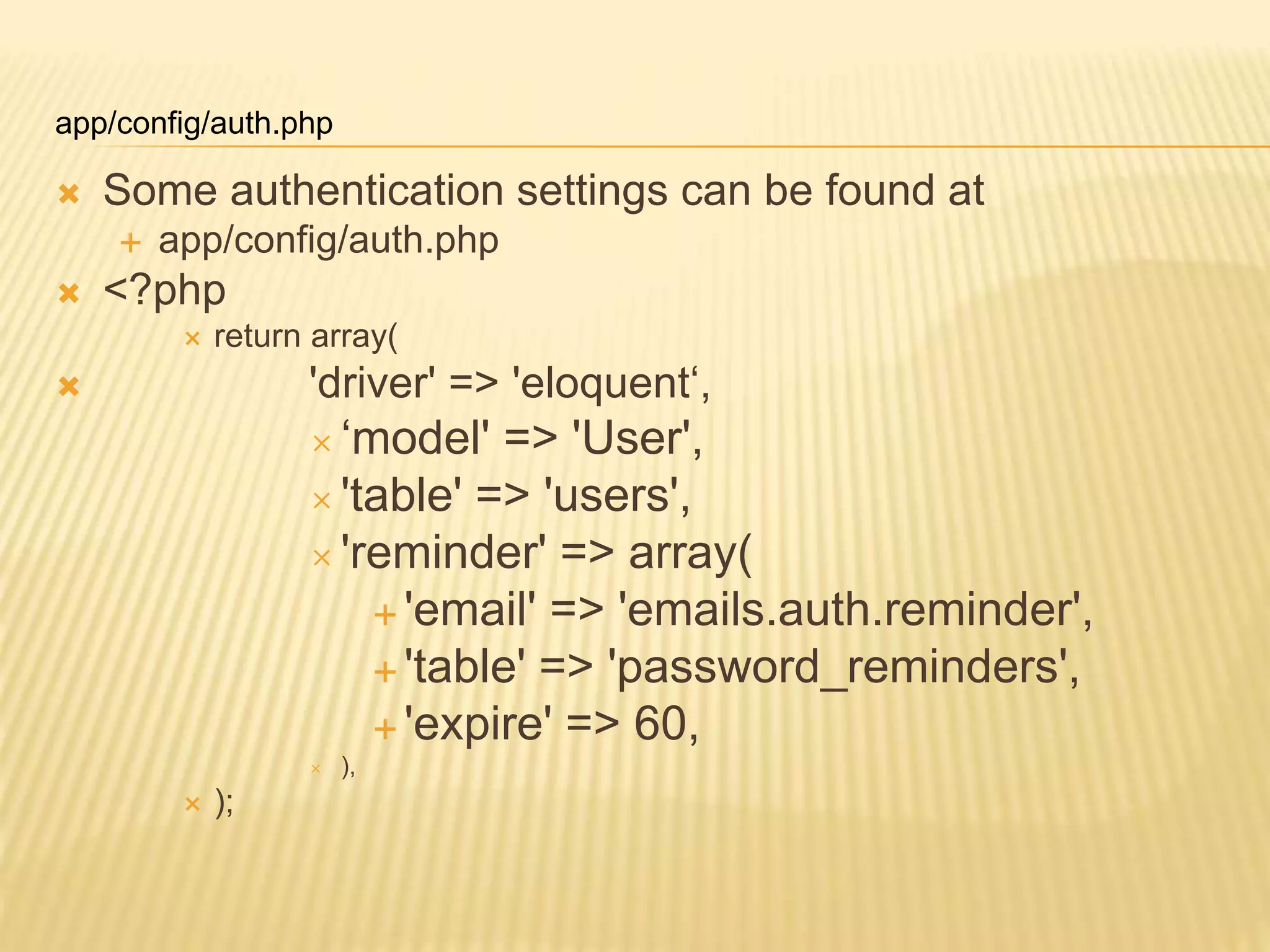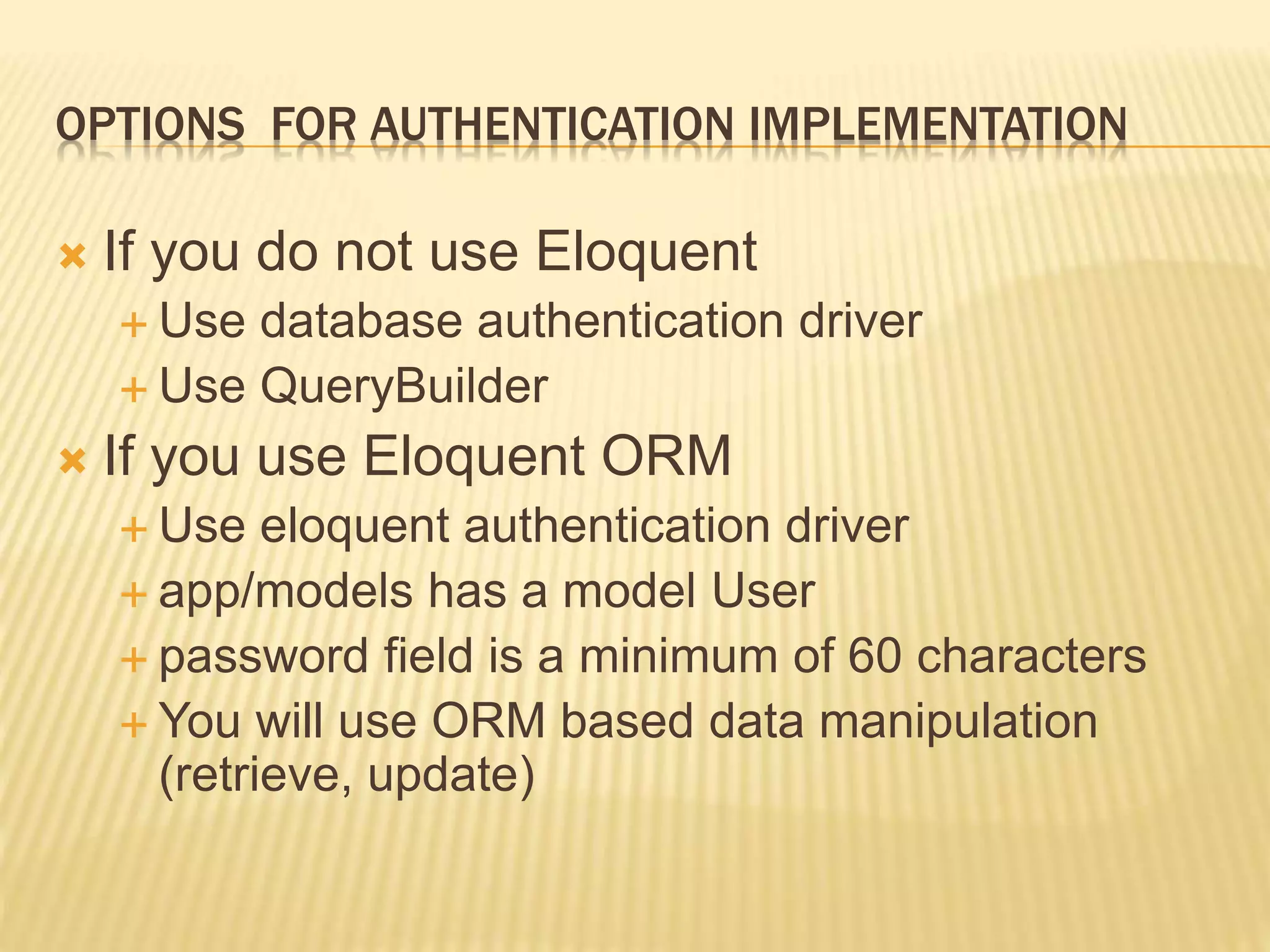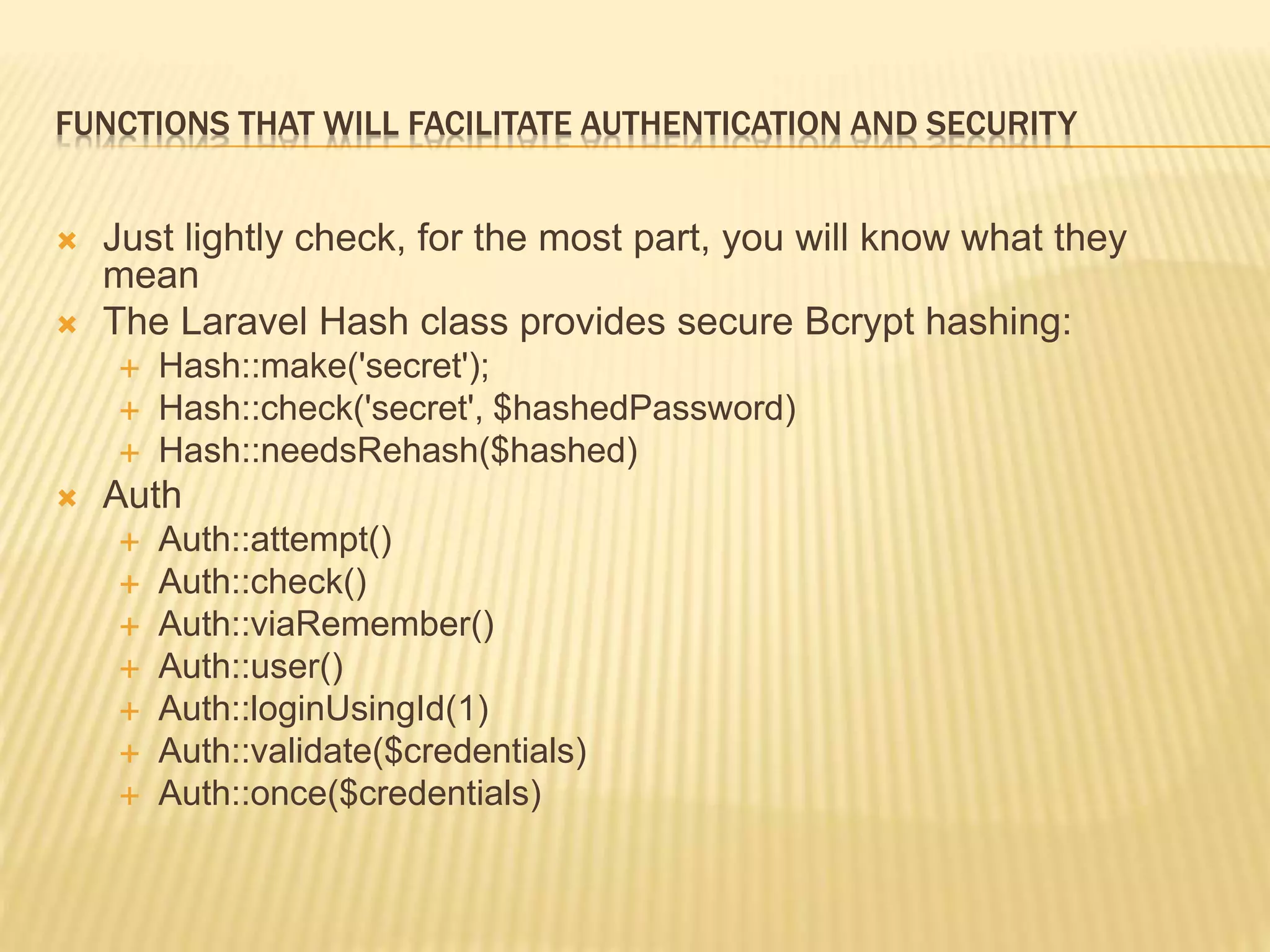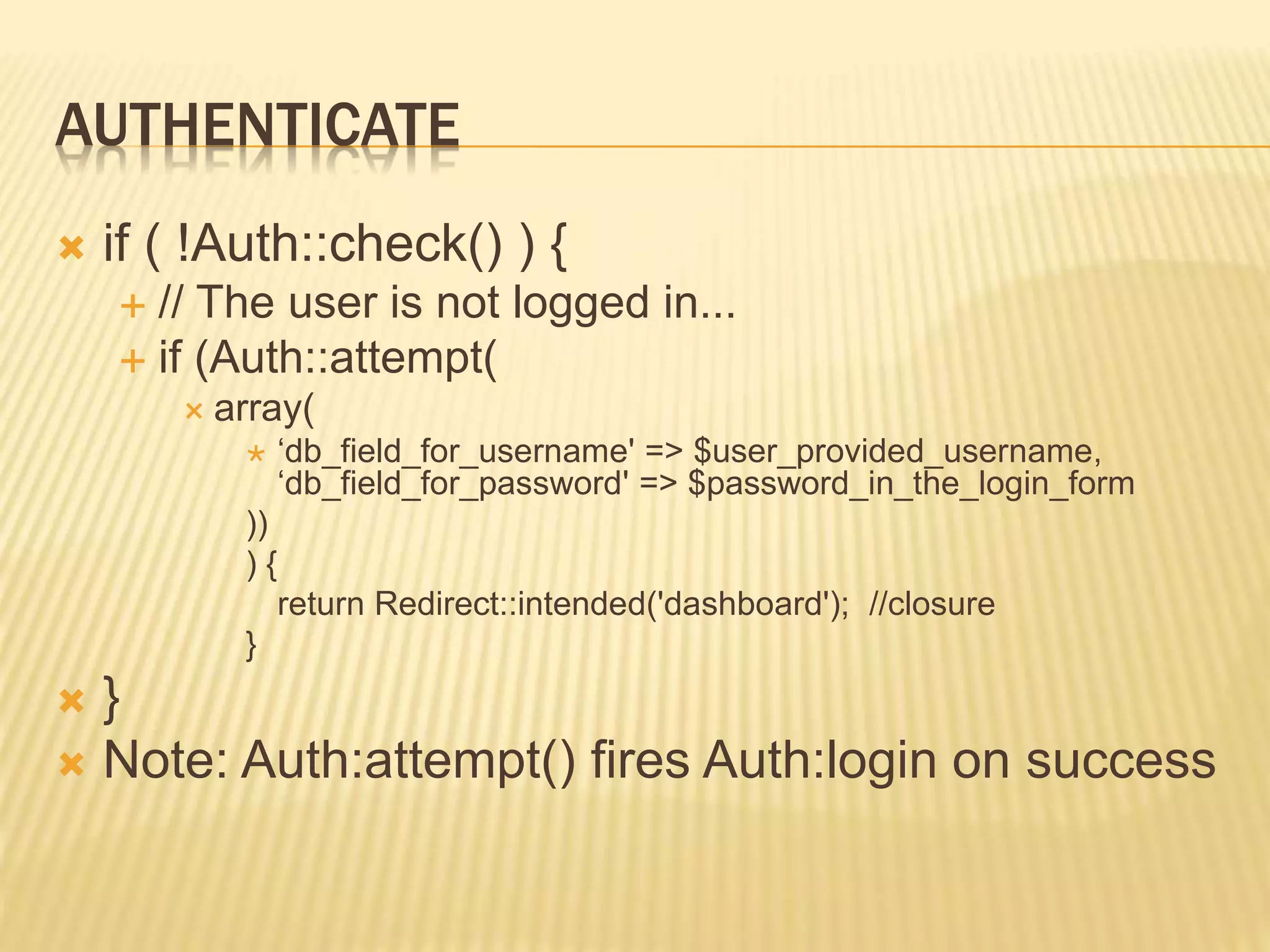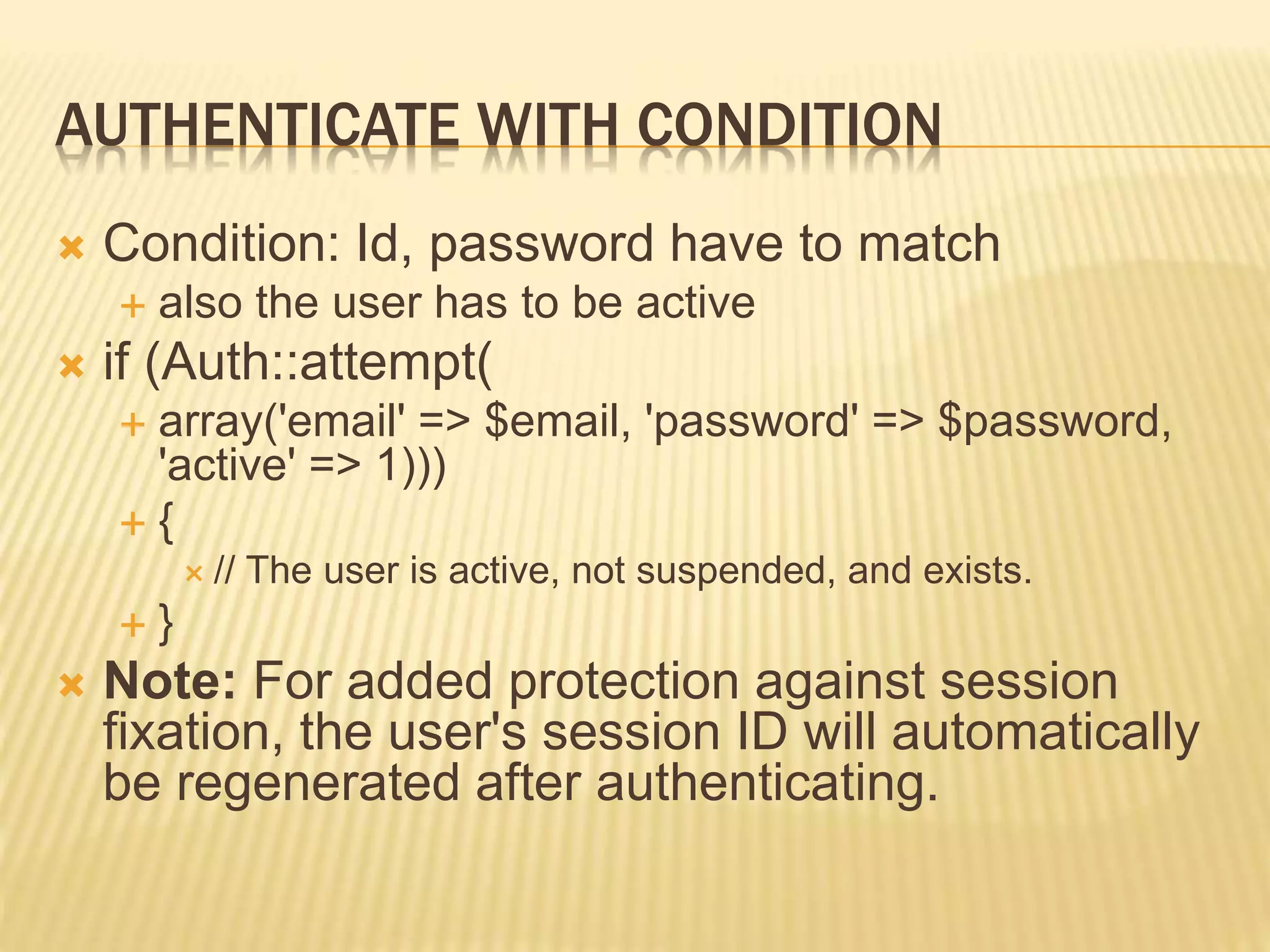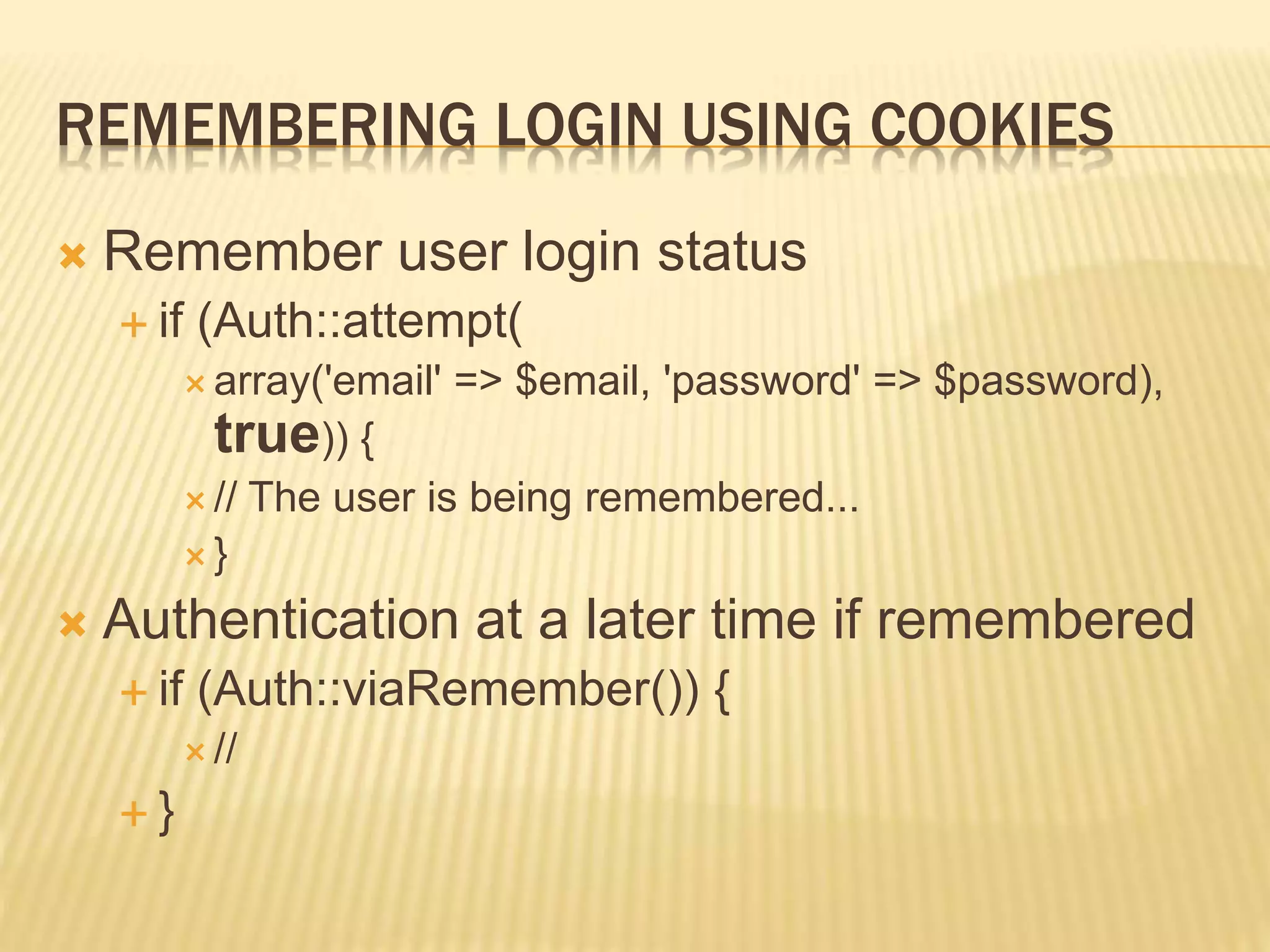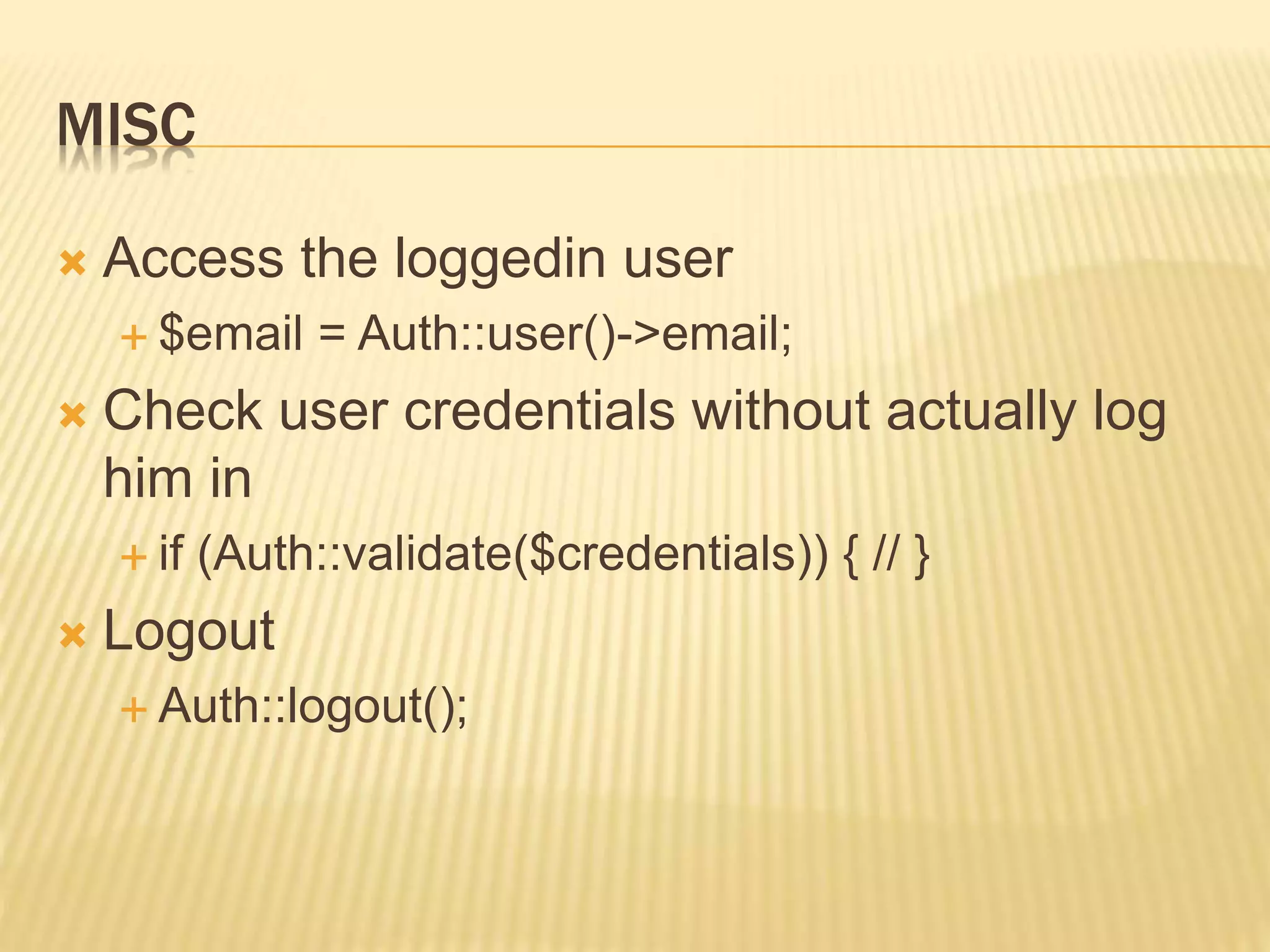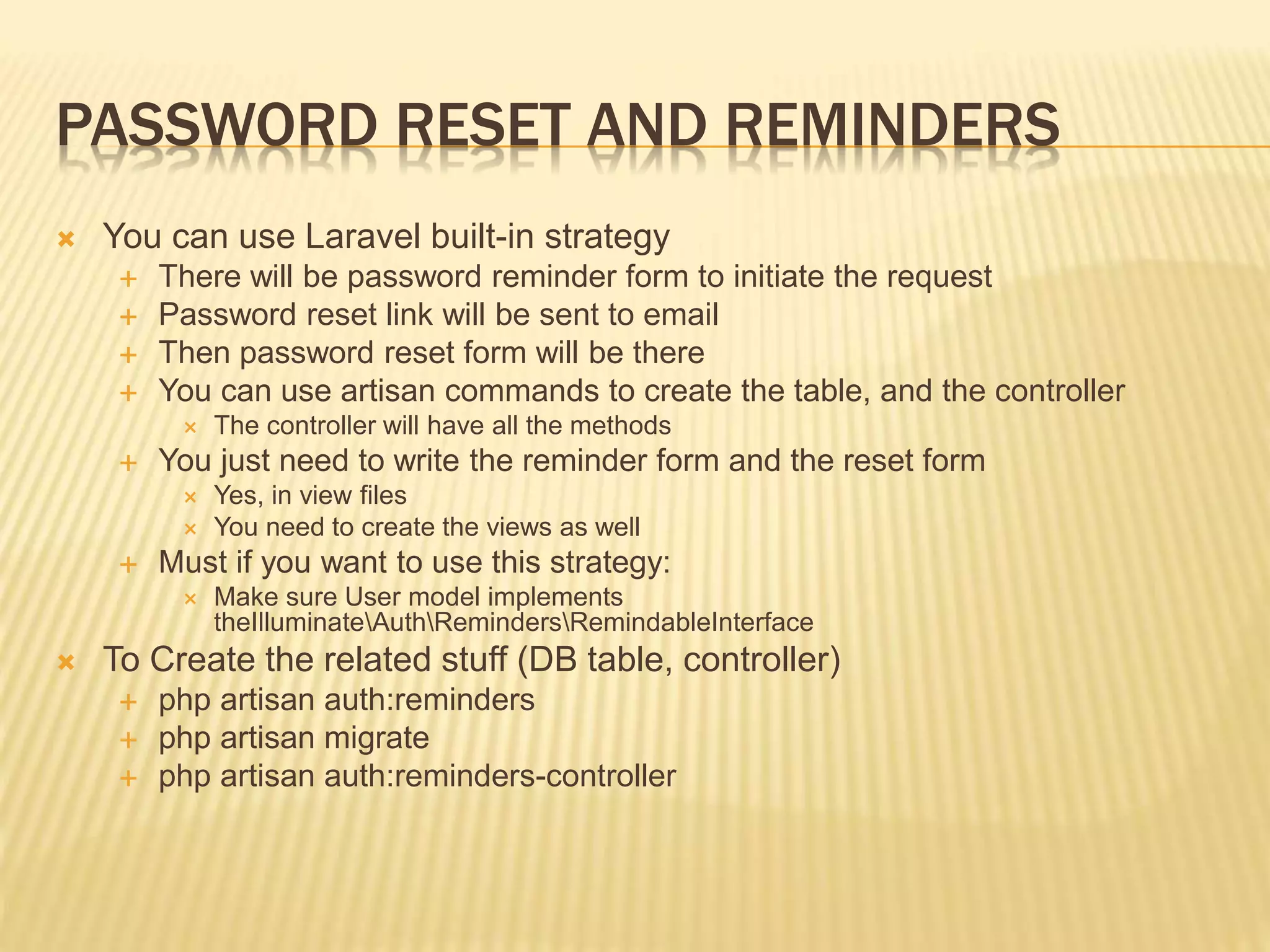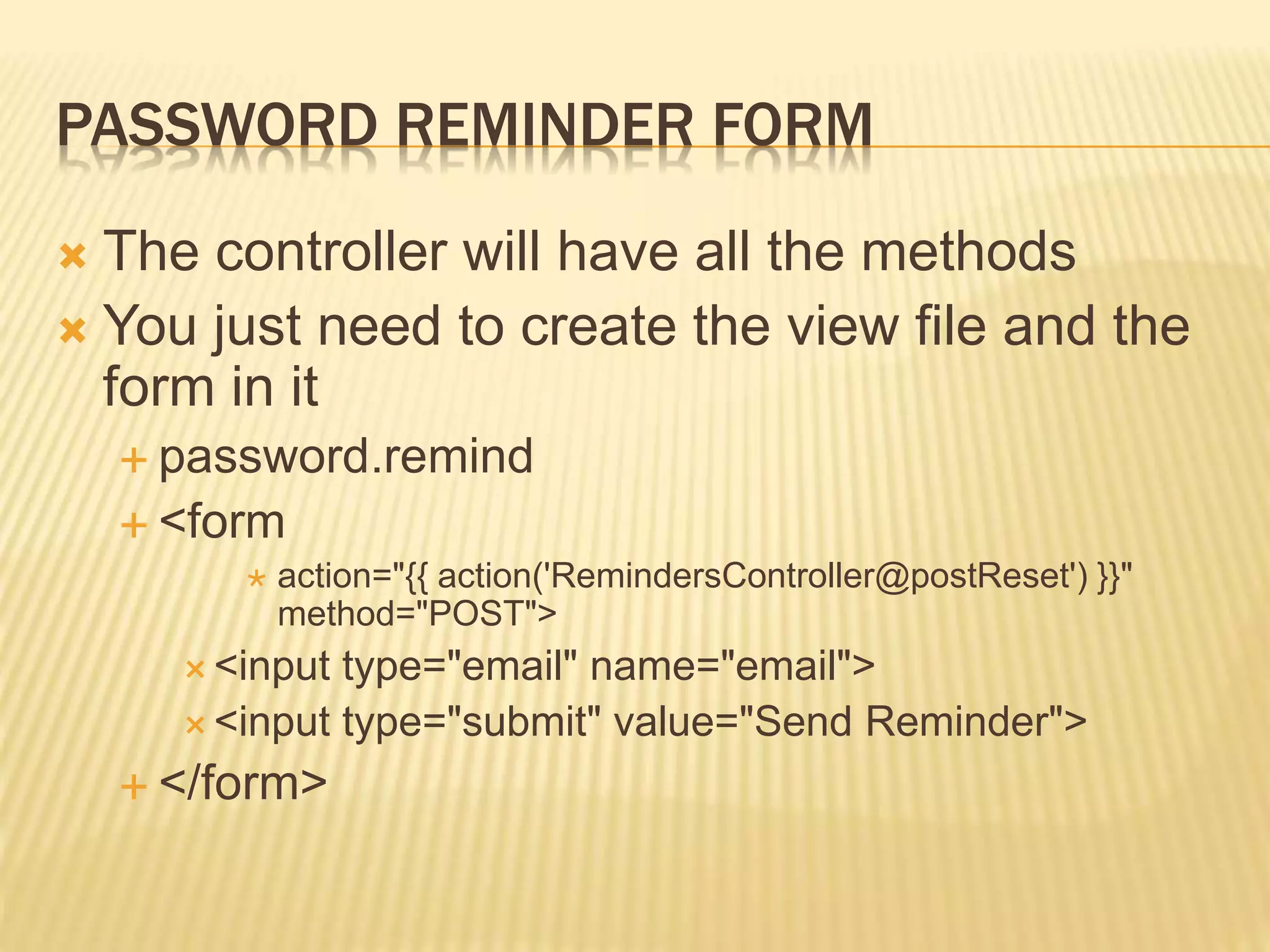This document provides an overview of authentication and security configurations and functions in Laravel. It discusses setting an encryption key in the app.php file, authentication settings in the auth.php file, password hashing with the Hash class, authentication attempts with Auth, remembering logins with cookies, accessing the logged in user, logging out, and password resets using Laravel's built-in functionality. Functions like Hash, Auth, Crypt and Password are covered, along with creating authentication and password reset views.

